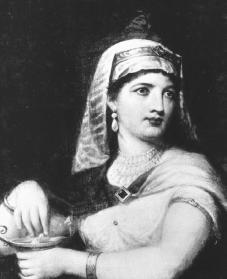
The mummification process took approximately 70 days and had four main stages. In the first stage, priests worked as embalmers in removing all the internal parts of the body in order to prevent decay. The embalmers removed organs in the abdomen and chest region through an incision most commonly made on the left side of the abdomen. The only internal organ left is place was the heart because it was believed to be the center of a person's intelligence. The other organs such as the stomach, liver, intestines, and lungs were conserved in special containers referred to as canopic jars. These were later buried with the mummy as part of a ritual.
During the second stage of preservation, all moisture was removed from the body. This was done by applying natron, a type of salt, which had excellent drying properties. Natron packets were also placed within the body to further dehydrate the body. Once the body was thoroughly dry, the internal packets were removed and the natron was washed off the body. The result of this was a dried out human form, but still recognizable.
Within the third stage, the wrapping of the mummy began. This required hundreds of yards of linens. The embalmers executed another job in the process by winding the long strips of linen around the entire body, while also focusing on wrapping each finger separately before doing the whole hand. It was during this stage that priests placed good luck charms along with prayers and magical passages that were written upon the linens. It was also common for the priests to place masks portraying the person's face between the multiple layers of wrappings. It was after the priests secured the final cloth in place with strips of linen that they marked the completion of the mummy.
All was now ready for the funeral. It was during this phase that priests presented particular religious rituals at the entrance of the tomb. This ceremony was called the "Opening of the Mouth." It was given this name because a priest touched distinct parts of the mummy with a special utensil in order to "open" those parts of the body. This was needed in order to open the body to certain senses that were needed in the afterlife. The last part of the body to be touched was the mouth, allowing it to be open in order for it to speak and eat. The mummy was now ready for the afterlife, as it was placed in a series of coffins and positioned in a sealed burial chamber.
Why preserve the body? It was a vital belief the Egyptians that the body was a type of home for the spirit and soul. Although mummification existed in other cultures, eternal life was the main focus of all Ancient Egyptians, which meant preserving the body forever.(Brier 112) It was also the home to the afterlife, and its complexity consisted of three spirits: the ka, ba, and akh. The ka was a copy of the person that remained in the tomb and required the offerings and objects there. The ba was the soul itself and was able to come and go freely to and from the tomb as desired. The akh, most commonly translated as spirit journeyed to the underworld to the “Final Judgment" and the entrance to the afterlife. All three components were essential to the importance of Egyptian after life and mummification.
I found this to be my favorite part of Egyptian history because it was very interesting the way the Egyptians valued the preservation of bodies. They thought that the way in which the preservation was executed was crucial in them succeeding and finding pleasure in the afterlife. To assure their continued existence in the afterlife, the ancient Egyptians worked hard to find the perfect method of preserving the body.(Silverman 83) This was so important that they spent most of their lifetimes doing their best to make sure this vital step was going to be carried out properly.
